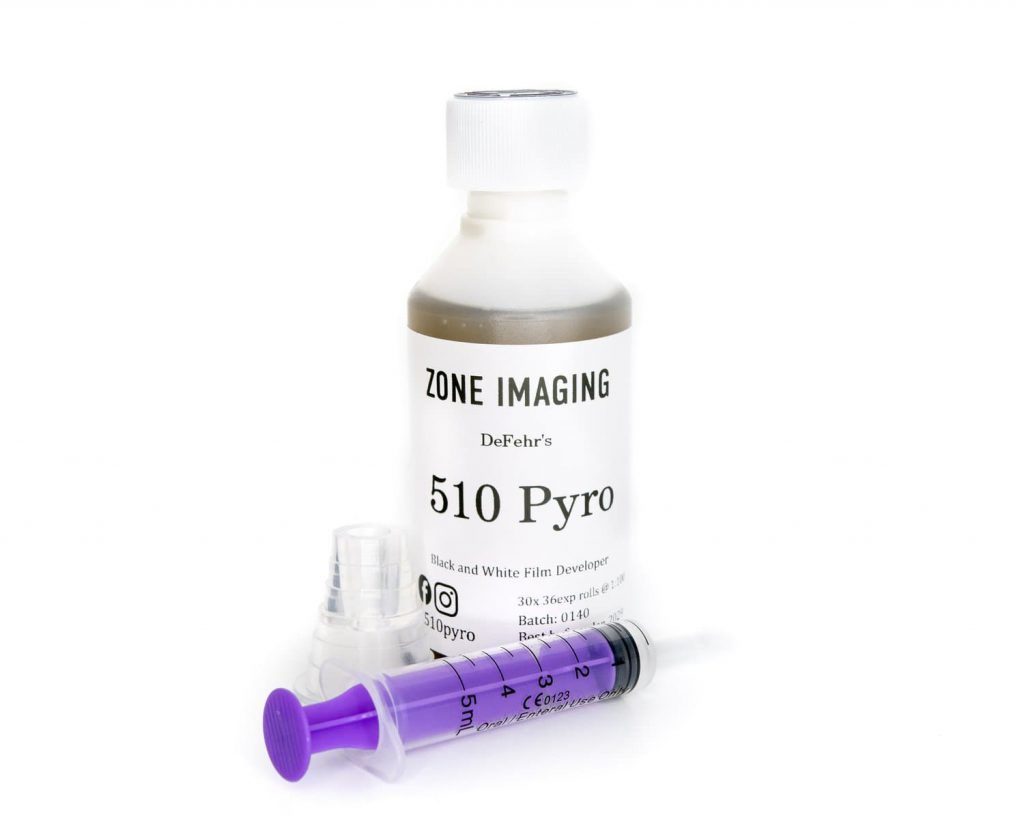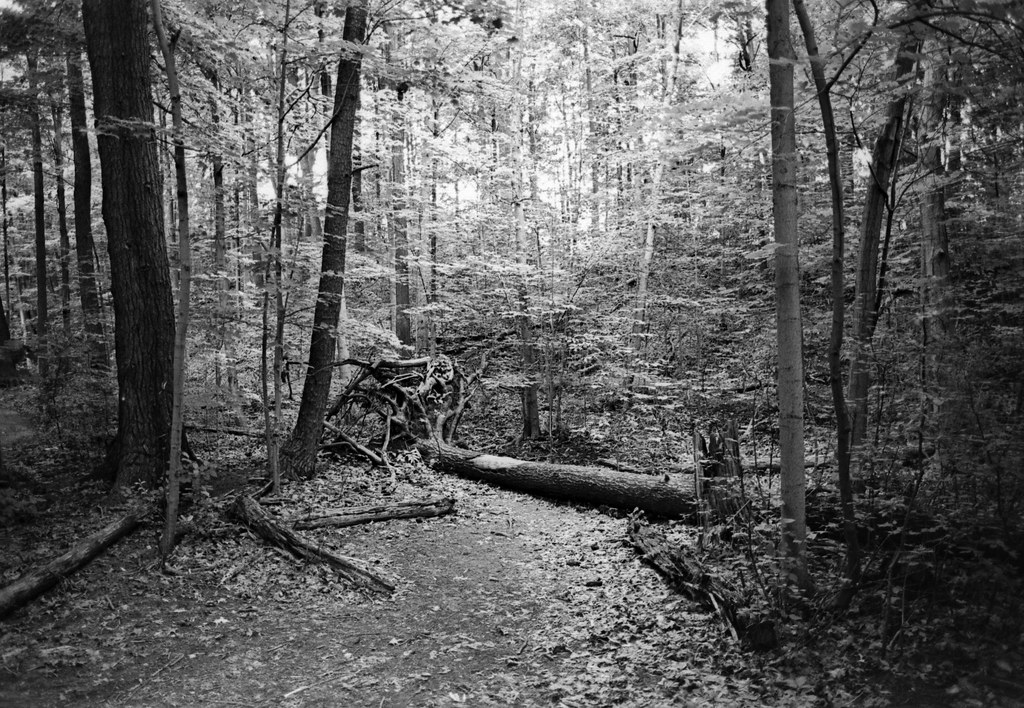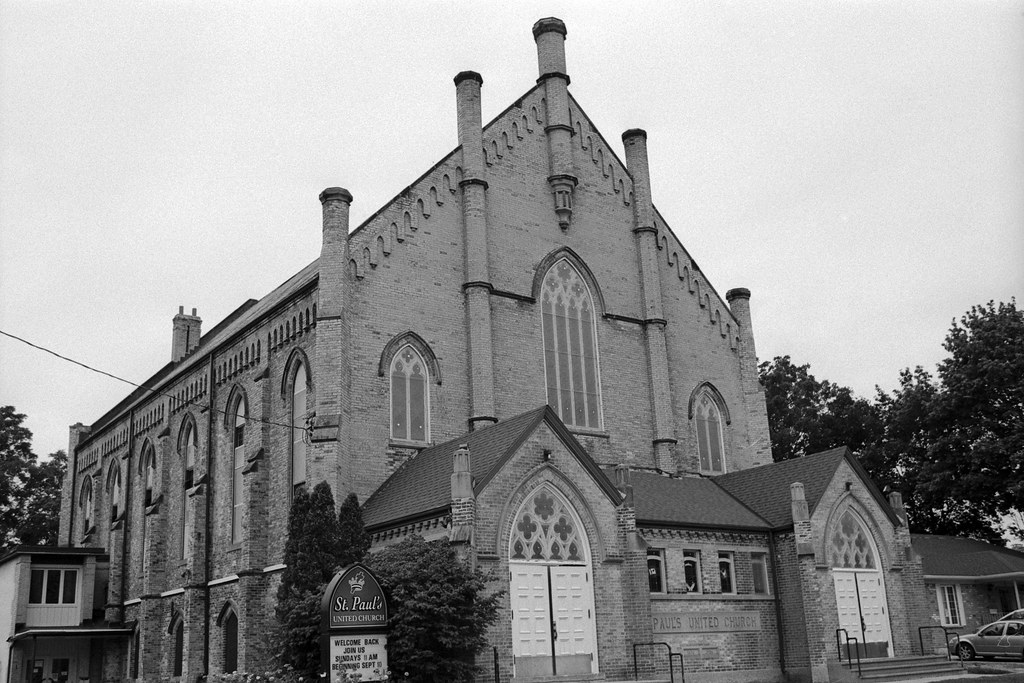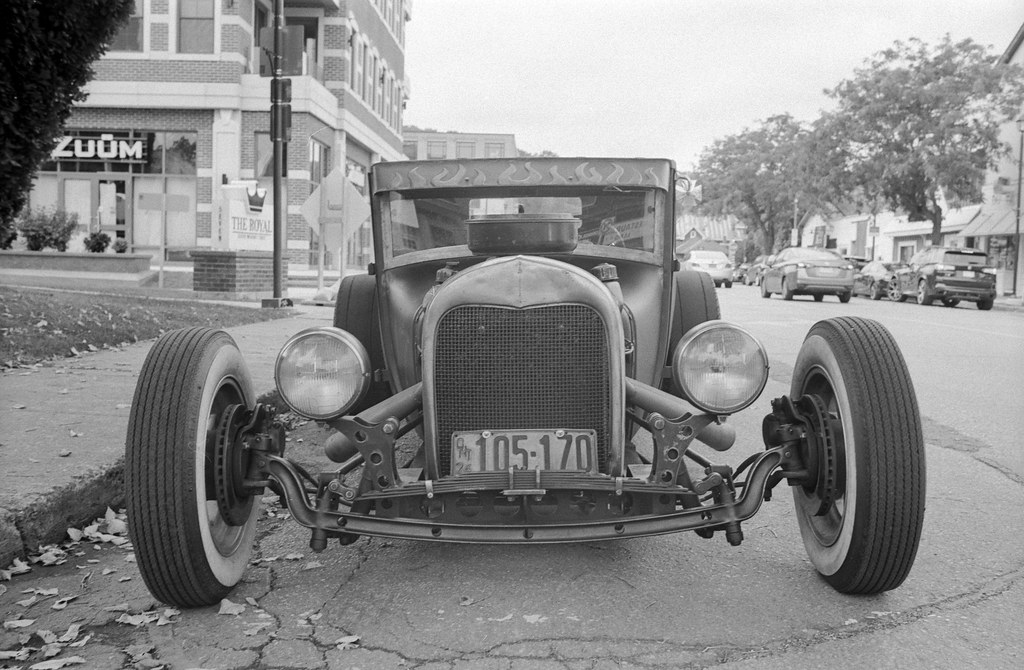Pyro developers hold a special place in my development tool kit. Despite being one of the oldest developers, being viewed as highly-specialised and highly toxic. I’ve found them to be one of the best developers I’ve used. My journey into Pyro started with PMK Pyro, followed up by Pyrocat-HD. But starting last year, I heard about a new Pyro developer, 510-Pyro. For being an old developer, Pyro developers continued to see advancement and innovation, with Sandy King bringing in Pyrocat-HD in 1999, but 510 is far newer. First released in 2006 and formulated by Jay DeFehr, 510-Pyro took a different approach to Pyro with only a single concentrate (PMK and Pyrocat use two concentrates to mix a working solution). A new formulation has fixed some of the issues noted in 2012. When I first started with this review, I used a bottle of 510-Pyro produced by Bostick & Sullivan, these images are in the process of being replaced by ones developed with Zone Imaging’s version of 510-Pyro, a far superior copy of the developer as it follows the modern formula and is better made. Special thanks to James Lane from Zone Imaging for helping me with 510-Pyro and some of the nitty-gritty included in this review. Another quick note despite showing several warning diamonds on the banner image, 510-Pyro, while not 100% safe, is incredibly non-toxic, based on studies by the EPA and ECHA.

Technical Details
Creator: Jay DeFehr
Manufacture: Zone Imaging
Name: 510-Pyro
Primary Developer: Pyrogallol, Ascorbic Acid, Phenidone A
Type: One-Shot
Mix From: Liquid




Handling
Unlike other pyro developers, 510-Pyro simplified things going with a single bottle of concentrate than the two that I was used to with PMK and Pyrocat-HD. It also means that I only have to store a single bottle of chemistry and not worry about mixing things up, such as giving a double shot of A or B and messing things up. As an aside, I never actually did that; I think the fear of messing that we kept me on the straight and narrow. The concentrate is thick compared to other Pyro developers and is close to the viscosity of Ilfotec HC. While it is still toxic, it isn’t as harmful as previous forms of Pyro developers. And recent work by Zone Imaging is showing that it is even less harmful to the environment than Kodak Xtol. Although it is still wise to take precautions, not dumping a whole bottle of concentrate down the drain, keeping it away from children and animals and seeking medical treatment if swallowed. Mixing it to a working solution is easy with more development combinations using either a 1+100 or 1+500 dilution. And you can use either manual agitation, a rotary base (with the appropriate decrease in time), or semi-stand and stand development is also acceptable with 510-Pyro. The shelf-line is near infinite for a closed bottle, and like Rodinal, it doesn’t have an expiry date for the concentrate. Making 510-Pyro perfectly shelf-stable in any perfect dark space and adequately stored. You’re looking at 6+ years of storage. Like any staining developer, it is recommended that you use a water stop bath and a non-acidic fixer, for example TF-3 from Photographer’s Formulary or Zone Imaging Eco Fix. If you have a film that doesn’t have a hardener in the emulsion, a standard fix for another 2-3 minutes is recommended. In full disclosure, I used standard Kodak Kodafix for all my images here, and while I don’t have any negatives to compare to, there was still a noticeable stain on my negatives.




Applications
The number one application for 510-Pyro is for folks who do a lot of printing; the stained negatives work well for traditional darkroom printing and alternative processes such as Platinum/Palladium. And if you’re like me, who does most of their work within a digital space, 510-Pyro plays well with flatbed and dedicated scanners and allows a great deal of editing within Photoshop. But like all other pyro developers, 510 is compensating. And one of the best compensating developers I have seen to date. You can pull a tonne of shadow detail out of thin negatives. The first roll of film I developed using 510-Pyro was a roll of Agfa Copex Rapid, a film notorious for being difficult to process in standard chemistry. Despite being thin, I pulled a tonne of detail out of them after scanning. If you do a lot of work with the Zone System or the Precision Metering Method, then 510-Pyro is an excellent option for your chemistry kit. But don’t limit yourself to a large format; 510-pyro does an excellent job with roll film, both 120 and 35mm. And it doesn’t matter about the grain structure either, working well with standard cubic and modern t-grain films. Fast or slow, the developer handles any speed film with ease and certainly tames some of the least desirable aspects. I’ve used 510-Pyro with Double-X, Tri-X, CHS100II, Kentmere 400, Delta 100, HP5+, TMax 400, and even highly technical films like CMS20II and Copex Rapid. Given that the developer comes in only a single bottle if you’re pushed for space, a single 100mL bottle will last a long time and not take up a lot of space.




Qualities
I’ve been known to use the term magic bullet when handling a problematic film, and Pyro-based developers have usually fallen into that category. And 510 certainly lives up to that description. The developer delivers sharp images in two ways; the first is edge sharpness the second is the tonal separation. But that tonal separation and excellent mid-tone replication and contrast make 510 stand out. But the real power of 510 is shadow recovery. A good 95% of my work involves scanning and posting my negatives online, so having a negative that scans well and allows for editing, and most importantly, shadow recovery is critical. And all the negatives I’ve developed in 510, I have near digital RAW file shadow and highlight recovery, allowing for a smooth tonal range. I saw this for myself with the first roll of film I developed in 510, Agfa Copex Rapid, a notoriously hard film to develop. But I also saw this with Tri-X, Delta 100, Ilford HP5+, Ilford FP4+, and Delta 3200; I could pull out details from those shadows without any trouble or compromises. It also handled high-contrast situations such as easy shooting a wedding in direct overhead sunlight and excellent makeup that produced superb skin tones. 510-Pyro always delivers the goods; no matter the film, you need to get above ASA-1600 before seeing some visible grain. Even then, it’s incredibly pleasing and maintains superb edge sharpness. The one thing I have noted, is that the biggest difference between the Bostick & Sullivan and Zone Imaging version of the developer is that the stain is far better from the Zone Imaging product.




Lowdown
510-Pyro is readily available from various dealers. James Lane from Zone Imaging in the UK has been working hard to get 510-Pyro into several online photography stores this year. Here in North America, I purchased through Bostick & Sullivan. I recommend picking up the Zone Imaging version, the latest and greatest version of 510, which you can order directly from Zone Imaging (with reduced shipping costs to North America) or through Freestyle Photographic. Additionally, if you’re into chemistry, you can find the ingredient list online and mix up your own from raw chemicals. Will 510-Pyro stay in my kit? It probably will; as someone who loves working with pyro developers, it is key to have a modern pyro developer that is easier to handle and has a long shelf life. Plus, being lower toxicity and having only a single bottle makes my life and development easier. Plus, of all the pyro chemistry I have used, 510 has the shortest development times and the best results and works well for a hybrid workflow that often involves more scanning than traditional printing.




Recommended Reading
Don’t just take my word on 510-Pyro check out these other blogs on the subject!
Zone Imaging – 510-Pyro Testimonials
Kosmo Foto – 510-Pyro: Is this the developer you’ve been waiting for?
Parallax Photo Coop – Kodak T-Max 100 in 510-Pyro
Pictorial Planet – 510-Pyro
I am trying to understand the difference between the ZI and B&S version. Is the B&S version based on the older formula?
That’s right the B&S version is based on the original and there have been some quality control issues. Best to buy the ZI stuff.
Where is a good place to start when using 510-pyro with hp5+ at box speed on a rotary processor at say 68 or 70 degrees? In 7:30 about right or 10% down from there in your opinion?
The one time I used HP5+ I exposed at 320, opened up the shadows slightly then processed normally and used the pulse mode on my B’s Processor for 7.5 minutes. If you go full constant rotation drop by 10%
I have a B’s processor and use pulse mode with the wobble wheels. I typically develop using the same times I would use by inversions. Is that correct? Or if I use the B’s processor in any mode do in need to drop dev times by 10%? I recently developed some Arcos 100 in 510 Pyro at the development times suggested on the 510 Pyro instructions. The negatives look fine but I have not scanned them yet. I am using the Zone Imaging version of 510 Pyro.
Okay, so when I wrote this I was going by the book. In Pulse mode, I would drop the time by 5%, since then I don’t make any adjustments in pulse mode. I will drop the time by 10% in the No. 2 setting (slow constant rotation), which is again different from the book which says 15%. So in short, no adjustment in pulse, 10% drop at the No. 2 setting.
Thanks for the reply! I really like the results I get with 510 Pyro, especially with Ferrania P30. I did this with no adjustments, same time as not using a processor which correlates to what you said using pulse mode.
https://adobe.ly/3VWlzEX